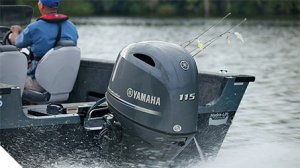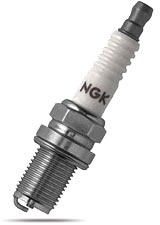
Yamaha outboard water pump Replacement
 There are some various other important things to keep a watch on. Check your owner’s handbook for the certain outboard’s routine, and hold note of when to check on all of them by watching your time meter, or utilizing the Yamaha Outboards software on your smartphone.
There are some various other important things to keep a watch on. Check your owner’s handbook for the certain outboard’s routine, and hold note of when to check on all of them by watching your time meter, or utilizing the Yamaha Outboards software on your smartphone.
Liquid Pump.
Your liquid pump is in charge of maintaining your engine sweet. It’s an easy system that works very well. Cooling water is drawn in through the intake grates on your own reduced device, up to and through a rubberized impeller keyed on drive shaft above the lower device, and pumped up into the powerhead of one's outboard. Here it circulates and finally exits back down through propeller to hold it sweet from outboard’s exhaust. A telltale hole produces a small, visible blast of water after it has passed away through the powerhead, to greatly help suggest that cooling water is streaming.
Tip: If liquid should stop flowing from telltale hole on the outboard, or if the stream becomes weak, very carefully look at the socket tubing for obstructions. Mud daubers as well as other bugs like to call these places house, specifically during periods of prolonged storage space.
Suggestion: not absolutely all outboards will produce waterflow from the telltale hole at idle speed, even when operating ordinarily. Once RPM increases quite, however, you ought to view it. In the event that you don’t, keep a close watch in your heat gauge and tune in for a warning horn. Furthermore, Yamaha outboards have an RPM reduction mode (since do most brands) that may limit the motor RPM if an overheat condition is recognized.
Time without use can lead to the impeller “taking a set”, or getting permanently deformed, due to its off-center positioning inside cup. This disorder makes liquid circulation much weaker. Additionally, times of non-use can cause the rubberized to become more brittle, maybe even breaking pieces off and delivering them in to the coolant system. Hence, it is better to replace your water pump impeller and/or whole water pump construction when maintaining these products, rather than turn your outboard’s crankshaft or driveshaft in a counterclockwise direction.
Suggestion: The rubberized impeller is found inside a stainless glass, and uses water for lubrication. If this water just isn't present, the friction for the plastic on stainless-steel will extremely rapidly overheat and destroy the rubber impeller. For this reason it’s imperative never to run, and/or turn-over, your outboard without there being a proper way to obtain liquid into outboard in advance.
 As a general rule, inspect the impeller and water pump assembly every year if operating in salt, brackish or turbid water, and replace if necessary. The debris during these oceans acts like sandpaper. If running in freshwater this is certainly obvious and clean, this period may likely stretch to two seasons, provided no dried out procedure features happened. Be sure to check your specific owner’s manual for the outboard’s certain service interval.
As a general rule, inspect the impeller and water pump assembly every year if operating in salt, brackish or turbid water, and replace if necessary. The debris during these oceans acts like sandpaper. If running in freshwater this is certainly obvious and clean, this period may likely stretch to two seasons, provided no dried out procedure features happened. Be sure to check your specific owner’s manual for the outboard’s certain service interval.
Suggestion: If you’re anyway uneasy about carrying out impeller/water pump assessment and replacement procedures, have your regional Yamaha aquatic supplier do the work. They have the equipment, materials and education to do it right, for the peace of mind.
Belts and Hoses.
Any devices and hoses your outboard has must run in the brutally harsh marine environment. Give them a glance once in a while, and heed the manufacturer’s routine for replacement. If you discover cracking or fraying, be safe and replace. Don't make an effort to “flip” a belt to increase its life, nor manage the gear with lubricant of any kind on the hands. Keep these safe from spray-on lubricants, also.
Tip: Yamaha four-stroke outboard timing belts and HPDI® two-stroke outboard high-pressure gas pump devices tend to be cogged and Kevlar®-impregnated, making them super-tough and non-stretchable. Nonetheless, Yamaha advises they be altered every 5 years or 1000 hours.
Spark Plugs.
Typically, pull four-stroke outboard spark plugs every 200 hours or every single other season and look for proper shade and wear. They must be a light brownish color and have reasonably sharp sides. When needed, change with the precise manufacturer and component number that the outboard’s manufacturer stipulates. The brand name kind and style of spark plugs utilized in your outboard tend to be by-design. They have particular overall performance attributes being designed into your outboard. Those little markings and figures on the spark plugs have a great deal of details about temperature range, thread level, etc.; therefore don’t second-guess or you will need to cross-reference right here. Your outboard’s overall performance is determined by it.
Air Intake Passages.
Make sure you check the air intake passages for any obstructions such as for example bird nests and other debris introduced by different critters. Look using your cowling, too. It willn’t take very long for the outboard or boat in order to become home to regional birds and insects, and it may be a real headscratcher when it comes to performance-loss analysis.
Thermostats and Pop-Off Valves.
They're responsible for managing the working temperature of your outboard. Simple and easy effective, they’re best observed through any signs and symptoms of improvement in the engine’s running heat. Operating in saltwater may cause build up to build up, causing the valves to stay open, which can over-cool the outboard and stop it from achieving correct working heat. Small bits of dirt inside air conditioning water-can get lodged between mating areas and cause the exact same condition. Should this happen, treatment and cleansing is most often the fix. Look at your owner’s manual for specific replacement tips.

















